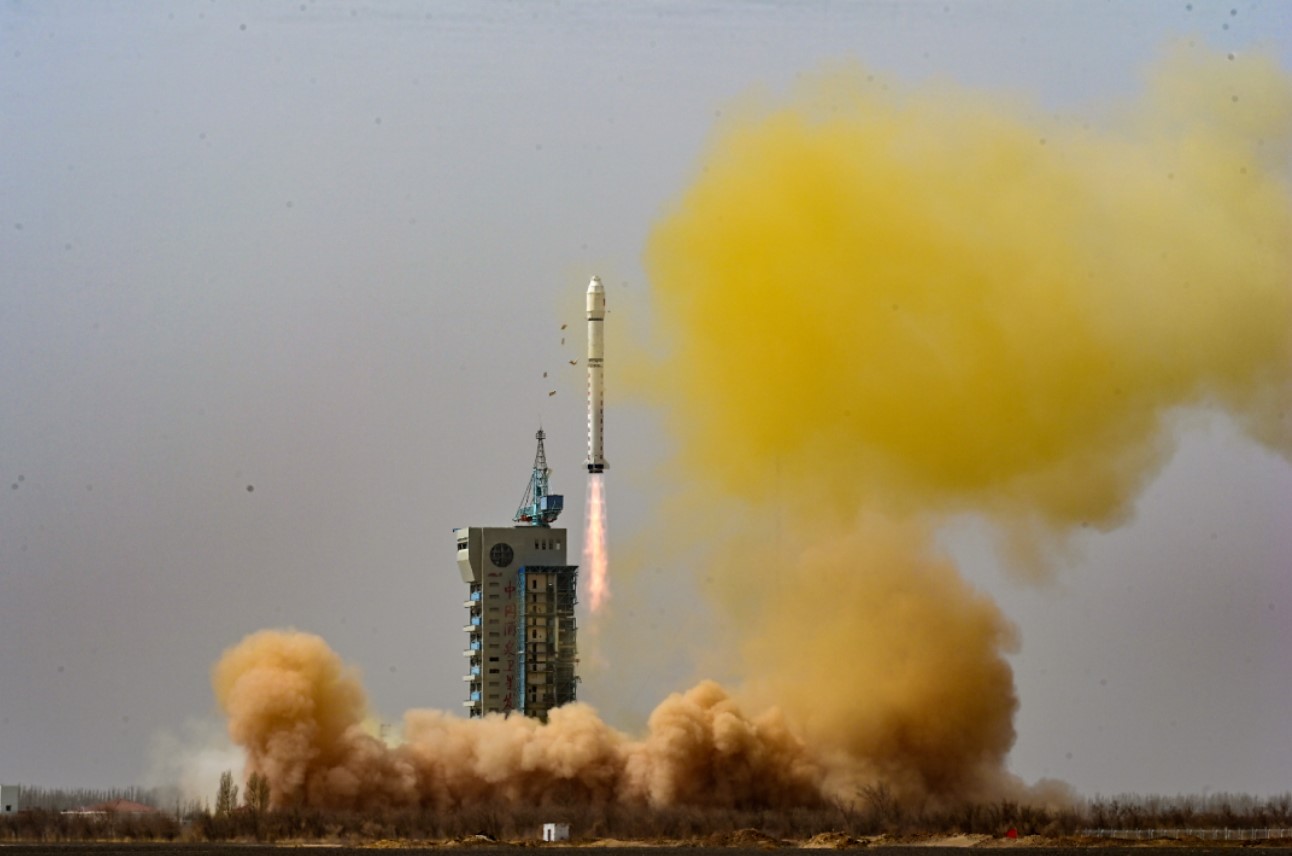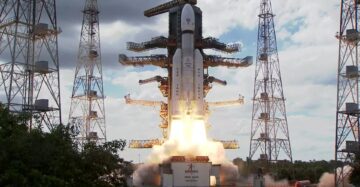
HELSINKI — China has launched a new batch of Yunhai-2 meteorological satellites likely for use by its military.
A Long March 2D with a Yuanzheng-3 upper stage rocket lifted off from Jiuquan Satellite Launch Center in the Gobi Desert at 1:27 a.m. Eastern (0527 UTC) March 21. The China Aerospace Science and Technology Corp. (CASC), confirmed launch success around three hours later, also revealing the payloads for the mission to be the Yunhai-2 (02) batch of satellites.
The satellites were likely released into a series of orbits following a series of burns by the YZ-3 upper stage. The launch follows a similar mission from 2018 which saw a first group of six Yunhai-2 satellites put into orbit by a Long March 2D and YZ-3 combination.
These satellites are described only briefly as to be used mainly for atmospheric environment detection, space environment monitoring, disaster prevention and reduction, and scientific experiments, according to Chinese state media.
The Yunhai series are, however, assessed to be military meteorological satellites by some Western analysts. They are believed to use Global Navigation Satellite System (GNSS) Radio Occultation (GNSS-RO) to collect atmospheric data. GNSS-RO detects changes to GNSS signals as they pass through Earth’s atmosphere and ionosphere providing data useful for weather forecasting and atmospheric processes, ionospheric research and other areas.
Curiously, the first Yunhai-2 satellites, launched in late 2018, were inserted into initial, curricular orbits, with three orbiting at 520 km and another three at 1,095 km. However, all six are now in roughly circular 800 km orbits, either raising or lowering their orbits significantly in mid-2019.
The YZ-3 (“Expedition-3”) is equipped with a 5kN main engine and an autonomous navigation and guidance system. It can perform over 20 autonomous rapid orbital maneuvers. It is primarily for deploying multiple satellites into different orbits, according to the Shanghai Academy of Spaceflight Technology (SAST). SAST also produces the Long March 2D.
Last week’s malfunction of a YZ-1S upper stage did not impact Thursday’s mission. That upper stage was developed by the China Academy of Launch Vehicle Technology (CALT), another CASC institute.
U.S. Space Force tracking has the YZ-1S from the DRO-A/B launch in a highly-elliptical high Earth orbit. Orbital data, from March 15, has the upper stage in a 524 x 132,577-kilometer-orbit, someway short of reaching the moon. The pair of small satellites were intended to enter a lunar distant retrograde orbit (DRO). China has provided no updates since a terse media note acknowledging the malfunction.
The launch of the Yunhai-2 (02) satellites is China’s 13th orbital mission of 2024. China is aiming to launch around 100 times across 2024, with around 70 to be conducted by CASC. China’s commercial launch service providers are planning around 30 launches.
The previous launch, on March 19 Eastern, sent the Queqiao-2 lunar communications relay satellite towards the moon.
- SEO Powered Content & PR Distribution. Get Amplified Today.
- PlatoData.Network Vertical Generative Ai. Empower Yourself. Access Here.
- PlatoAiStream. Web3 Intelligence. Knowledge Amplified. Access Here.
- PlatoESG. Carbon, CleanTech, Energy, Environment, Solar, Waste Management. Access Here.
- PlatoHealth. Biotech and Clinical Trials Intelligence. Access Here.
- Source: https://spacenews.com/china-launches-second-batch-of-yunhai-2-satellites/
- :has
- :is
- :not
- 02
- 1
- 100
- 15%
- 19
- 20
- 2018
- 2024
- 21
- 27
- 2D
- 30
- 70
- 800
- a
- Academy
- According
- across
- Aerospace
- Aiming
- All
- also
- an
- Analysts
- and
- Another
- ARE
- areas
- around
- AS
- At
- Atmosphere
- atmospheric
- autonomous
- BE
- believed
- briefly
- burns
- by
- CAN
- Center
- Changes
- China
- China Aerospace
- Chinas
- chinese
- circular
- collect
- COM
- combination
- commercial
- Communications
- conducted
- Corp
- data
- deploying
- described
- DESERT
- Detection
- developed
- DID
- different
- disaster
- Distant
- earth
- eastern
- either
- Engine
- Enter
- Environment
- equipped
- experiments
- First
- following
- follows
- For
- Force
- from
- Global
- Group
- guidance
- High
- HOURS
- However
- HTML
- HTTPS
- Impact
- in
- initial
- Institute
- intended
- into
- IT
- ITS
- jpg
- Late
- later
- launch
- launched
- launches
- Lifted
- likely
- Long
- lowering
- Lunar
- Main
- mainly
- March
- Media
- Military
- Mission
- monitoring
- Moon
- multiple
- Navigation
- New
- no
- note
- now
- of
- off
- on
- only
- or
- Orbit
- orbiting
- Other
- over
- pair
- pass
- perform
- planning
- plato
- Plato Data Intelligence
- PlatoData
- Prevention
- previous
- primarily
- processes
- produces
- provided
- providers
- providing
- put
- Radio
- raising
- rapid
- reaching
- reduction
- released
- research
- revealing
- rocket
- roughly
- s
- satellite
- satellites
- saw
- Science
- Science and Technology
- scientific
- Second
- sent
- Series
- service
- service providers
- shanghai
- Short
- signals
- significantly
- similar
- since
- SIX
- small
- some
- Space
- Space Force
- spaceflight
- Stage
- State
- success
- system
- Technology
- that
- The
- their
- they
- three
- Through
- to
- towards
- Tracking
- Updates
- use
- used
- useful
- UTC
- vehicle
- was
- Weather
- were
- Western
- which
- with
- X
- zephyrnet








